Published
on 17
Jun 2008
|
All rights reserved.
|
|
|
It
is always upset to see a prestigious marque falling. Lincoln used to be
seen as the American Rolls-Royce. When I started reading car magazines,
it was still the best selling luxury marque in the USA together with
arch-rival Cadillac. Now it falls behind Lexus, BMW, Mercedes-Benz,
Cadillac, Infiniti and Acura in its home soil, and virtually nobody
knows it outside the North America.
Evolution
of Lincoln concept cars
|
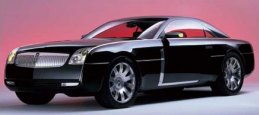
|
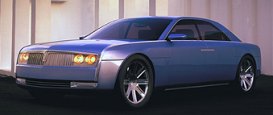
|
| Mark 9 (2001) |
Continental Concept I (2002) |
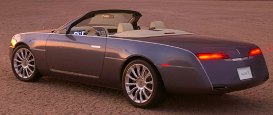 |
 |
| Mark 10 (2004) |
MKS (2006) |
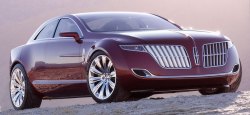 |
|
| MKR (2007) |
|
Ford
has been trying to revive Lincoln since it formed Premier Automotive
Group (PAG) a decade ago. The first act was the 1999 Lincoln LS, a
modern mid-size executive car derived from the platform of Jaguar
S-Type. Though not a bad car, it wasn't a commercial success as Ford
hoped for. Since then the company hesitated on the new direction of
Lincoln. It hired ex-Rover design chief Gerry McGovern to search for a
new design direction, which resulted in a string of retro yet gorgeous
concept cars such as Mark 9 (2001), Continental Concept I (2002) and
Mark X (2004). But these big cars were never materialized, as Ford
didn't want to invest into a new RWD big car platform. As a result, for
nearly 10 years Lincoln had no new product launches (except a few
badge-engineered sports utilities) and still relied on the aging Town
Car and Continental for the bulk of its sales.
The function of McGovern was substituted by Volvo's Peter Horbury since
2004. Horbury apparently disliked the retro style of his predecessor.
He displayed a modern yet down-to-earth concept, MKS, in 2006. It
wasn't so darling to most commentators, however, so in the next year he
raised the game with a much more stylish concept, MKR, and this time it
hit right the target ! Unfortunately, this is too late. The production
version based on the earlier MKS concept was already signed off, and
this is the car we see today.
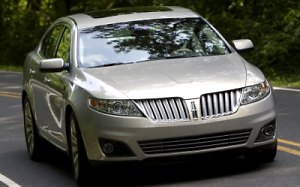
|
How can Lincoln took 8 years and 5
concept studies to produce a mediocre design like this ?
|
Looking
at the production MKS, we can hardly see the elegant lines and sporty
proportion of last year’s MKR. The waterfall grille and horizontal
lower intake are quite old fashioned. The recess on the bonnet looks
odd and unnecessary. The gently flowing waist line and kickback
C-pillar are not
bad, but they can never be signature design elements to Lincoln because
we have seen similar things in other cars. The same goes for
the ordinary tail design. In short, the MKS' exterior design fails to
deliver a classic and luxury feel we had hoped for. How can Lincoln
took 8 years and 5 concept studies to
produce a mediocre design like this ?
Compare to the exterior, the interior design is much better. Straight
lines and flat surfaces are employed as far as possible to interpret a
classic Lincoln style, while brushed aluminum decors inject some
modern flavours. Materials appear to be good, with plenty of soft
paddings, real wood, real aluminum and Scottish soft leather. Plastics
are high grade ones, although some switches have a budget feel. Ford
and Microsoft’s Sync system is standard on this car. It provides
wireless communication with your phone and MP3 player and allow you to
control these devices through voice recognition, which is very
initiative to use.
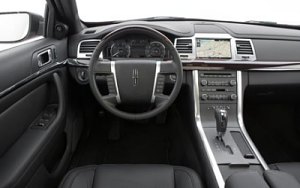 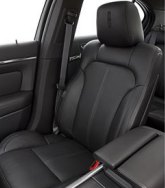 |
Cabin: classic Lincoln style combines
with modern aluminum decors
|
The front seats are comfortable yet
supportive, plus they
have standard heaters and coolers incorporated. The rear can easily
accommodate folks of 6 ft 2 in behind another guy of similar size. This
is not much of a surprise, because the MKS has a transverse engine and
FWD architecture, therefore it can provide more interior space than
most
European and Japanese executive cars out of a similar wheelbase.
Considering the modest sales projection, Lincoln apparently cannot
afford to develop a dedicated rear-drive platform for this car. Neither
can it utilize the platform of Jaguar XF, as Ford had long planned to
spin off its British unit (although it denied that). As a result, the
only possibility was to derive from the FWD platform of Volvo S80. This
also makes sense to the economy of scale, as Ford Taurus (previously
Five-Hundred) and Taurus X have already localized production of this
platform in the USA. The production lines and components supply chain
are already there, so adding another model would cost relatively little
money.
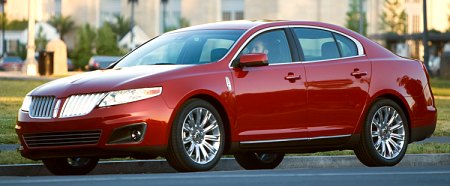
|
Despite of 4WD, MKS is no where as
entertaining to drive as BMW...
|
The downside is, of course,
front-wheel drive. A compromised
solution is to equip the MKS with 4WD option like its Volvo cousin. It
uses an electronic-controlled Haldex multi-plate clutch to send power
to the rear wheels in case the front wheels slip. This benefits overall
traction, reduces understeer and torque steer. However, the steering
feel and chassis balance are still no match with a proper RWD car. This
mean MKS is no where as entertaining to drive as BMW, Mercedes, Jaguar,
Infiniti or Acura RL.
As you would expect for an American luxury car, the suspension tuning
is soft to deliver a superb ride comfort. The steering is light to the
extent of feeling remote. Old drivers might prefer its relaxing
personality, but thread it through the mountains and it will feel
ponderous to handle. The 1940kg kerb weight (or 1872kg for FWD model)
also puts a lot of strain to the 3.7-liter Duratec V6. This engine is
exactly the one serving the American version of Mazda 6. It is neither
the most powerful nor the most refined V6 in the class – actually, far
from it. 273 horsepower and 270 lb-ft of torque might serve well in a
1600 kg family sedan, but in a near 2-ton luxury car it is often
breathless. The 6-speed automatic transmission often needs to drop a
gear or two to keep the engine in power band. We estimate 0-60 mph will
take around 8 seconds, i.e. the slowest in class.
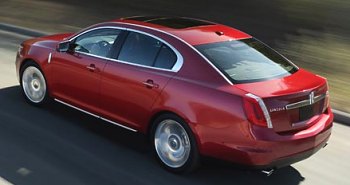
|
273 hp V6 in a near 2-ton car means a
breathless drive...
|
This mean the Lincoln doesn’t like to
be pushed. It prefers
cruising on highway, where wind noise is well insulated by the
laminated glass in windscreen and front windows. The supple ride, the
quiet cabin and vast interior space actually make it a worthy successor
to Town Car, surprise !
Unfortunately, the world no longer needs a Town Car. The MKS is neither
exciting nor green enough to lure new generation drivers. It isn’t
beautiful. It isn’t cheap either. In a market crowded with many good
luxury cars (even Hyundai builds very decent luxury cars these days), I
see no special reasons to choose the Lincoln.
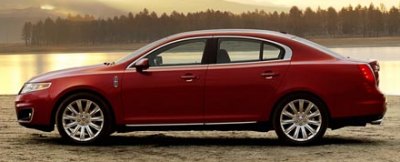
|
Now even Hyundai can build a more
decent luxury car, the road to revive Lincoln won't be easy.
|
|
Verdict:   |
Published
on 3
Apr 2012
|
All rights reserved.
|
|
Lincoln MKS facelift 2012
|
|
In the sea of executive
cars,
Lincoln MKS has been largely forgotten. This is not without reasons:
the MKS is heavy, slow, bulky to steer and uninspiring to look, to name
a few. This year, Ford attempts to correct its faults with a mid-life
update.
It covers a restyled exterior and interior, more powerful engines,
revised steering and brakes, upgraded suspension and more luxury
equipment.
The modifications are much more extensive than the usual facelift.
Let's go into the details.
Outside, the new MKS is distinguished from the outgoing car by mainly a
new nose, which features a sleeker waterfall grille, headlamp clusters,
lower intake and fog lamp housing. It certainly looks more civilized.
Nevertheless, its ill proportion – with a bonnet, waistline and roof
way higher than regular cars – remains aesthetically challenging. This
should blame to the crossover platform it shares with the defunct Ford
Freestyle. Inside, the fundamentals are kept, but the center console
and steering wheel get less angular. The main instrument becomes a
single speedometer sandwiched by two small LCDs. Besides, new wood and
leather trims lift the quality feel. Sound insulation has been
enhanced, too. The vast list of equipment now includes Active Noise
Cancellation system, which also simulates a sporty engine note through
the speakers when you engage Sport mode.
The 3.7 Duratec V6 now produces 304 horsepower and 279 pound-foot of
torque, 31 hp and 9 lbft up from last year. This is achieved mainly by
the addition of variable cam phasing at the exhaust camshafts and a
fine tuning closer to the Ford Mustang V6. A pity direct injection is
still omitted. The flagship 3.5 Ecoboost V6 is largely unchanged,
though it quotes 10 more horses than before at 365 hp (while max.
torque
remains the same). Considering the car's immense weight, the
supercharged engine is definitely the preferred choice.
In the chassis, the most significant upgrades are the introduction of
CCD continuous adaptive damping and a 3-mode (Normal / Sport / Comfort)
control system. The latter integrates with power steering, engine,
transmission, traction and stability control. It might be normal to
expect a German luxury car to feature such a control system, but in a
Lincoln
that is nothing short of surprise. In reality, the control system does
tighten the body motion considerably in Sport mode, but it does this at
the price of ride comfort. In Comfort mode, the vice versa happens. The
Lincoln therefore fails to match the all-round handling and ride
quality of the class
leaders.
The weight and high center of gravity also prevent it from feeling
agile, although the retuned power steering (with quicker ratio and
rigidly mounted rack) feels more natural than
before and the larger brakes make stopping more confident. New software
quickens the response of the all-wheel-drive system, hence cutting
torque steer, but overall the
driving character is not to be confused with a proper rear-drive
machine. All in all, the Lincoln still fails to shine in the seas of
executive cars.
|
Verdict:   |
|